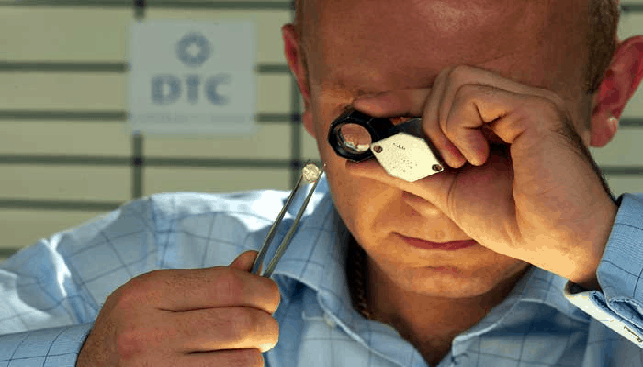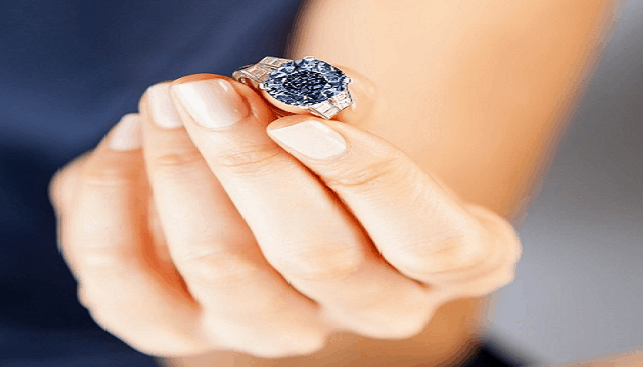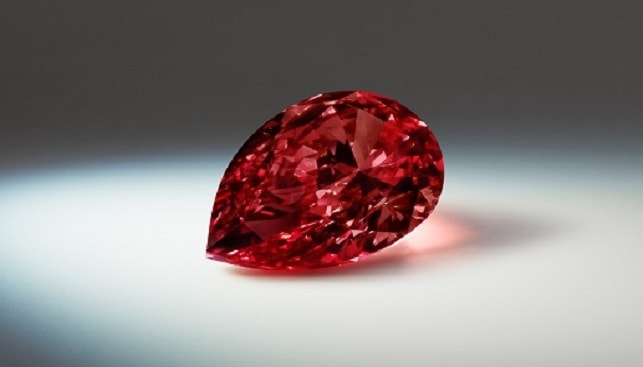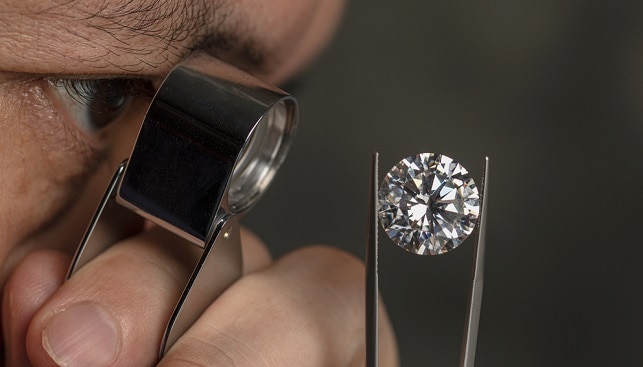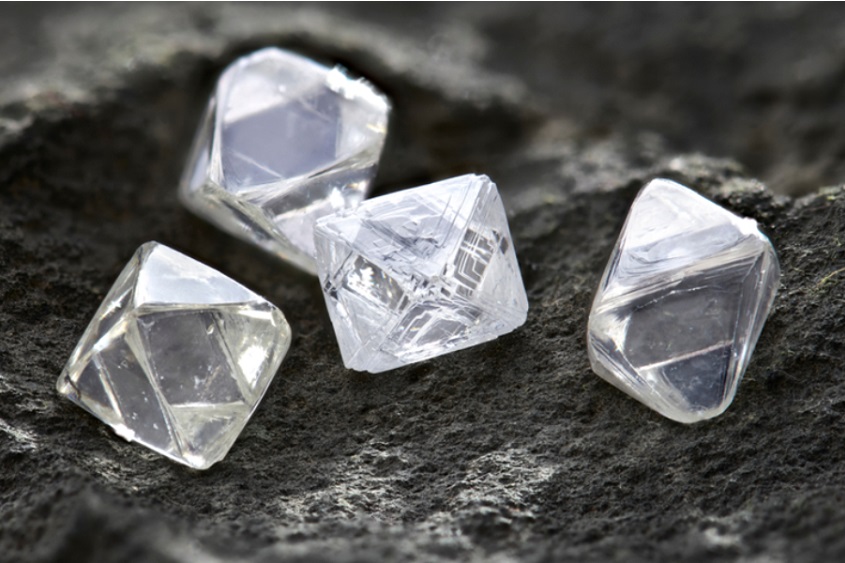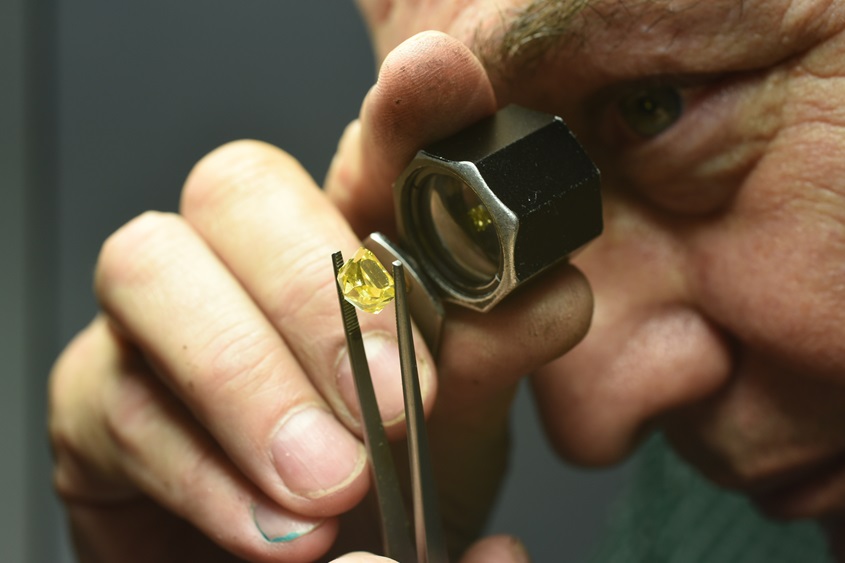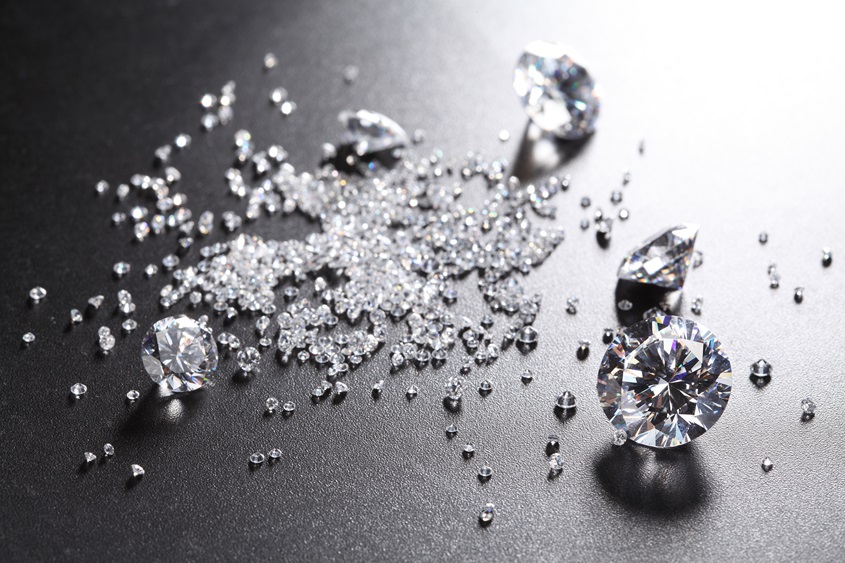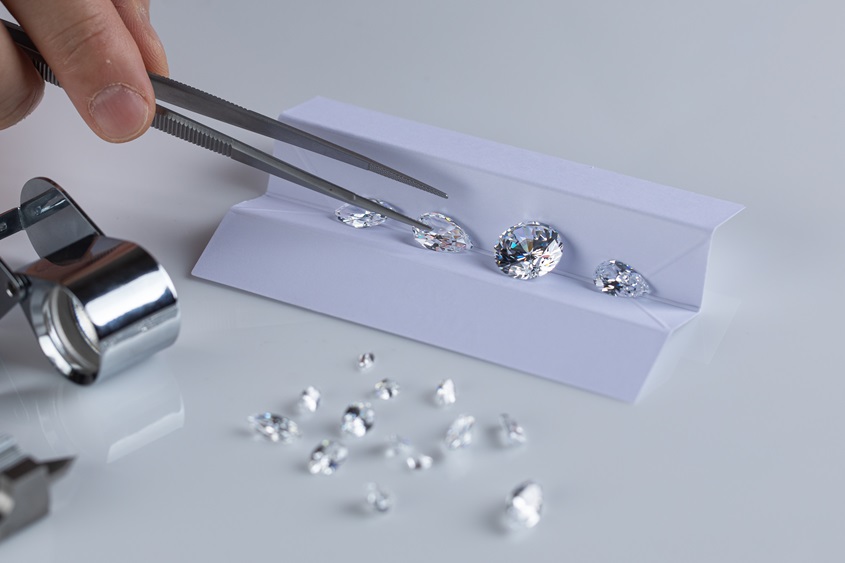Irradiation changes a diamond’s color and is the only diamond treatment that exists in nature as well as in laboratory conditions.
Natural green diamonds are the result of exposure to natural radiation over the course of years. While exposure to alpha rays causes only a superficial green hue, beta or gamma radiation penetrates more deeply into the diamonds, giving the stone a more complete color.
The first laboratory experiments that used irradiation as a method of coloring diamonds were conducted by Sir William Crookes in 1904. He successfully turned a diamond dark green, but the stone became so radioactive that it was unwearable.
Current irradiation methods are safe and produce green, blue, or black colored diamonds, but by increasing the mobility of the stone’s carbon atoms – a process known as annealing – irradiated diamonds can be turned yellow, orange, brown, or pink. Four methods of changing a diamond’s color through irradiation are currently in use:
Cyclotroning: A diamond is bombarded with protons and deuterons via cyclotrons. Cyclotroned diamonds take on a superficial blue-green or green color and are annealed to 800°C to turn them yellow or orange. This method has become comparatively rare.
Gamma rays: This is the cheapest and safest method of irradiating diamonds, but the treatment can take months. Gamma ray bombardment of a diamond through exposure to cobalt-60 produces a blue to blue-green color that penetrates the entire stone. Blue diamonds produced through irradiation are not semiconductors of electricity, unlike their natural counterparts.

